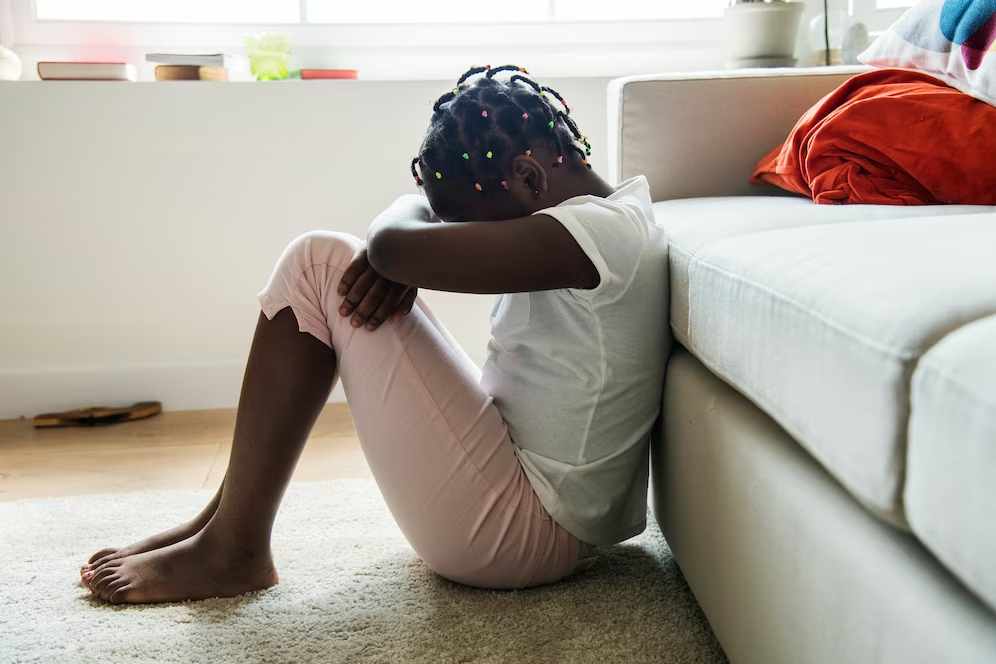Child abuse and neglect occur globally and impact long-term health, opportunity, and emotional well-being. However, you can help child abuse survivors get back to their normal lives with therapy.
In the United States, at least one in seven children has suffered abuse or neglect in the past year. Since many cases go unreported, this is likely an underestimate. As of 2020, 1,750 children have died due to abuse and child neglect in the United States. Children from low socioeconomic families are five times more likely to suffer abuse and neglect.
Become an insider. Subscribe to our newsletter for more top trending stories like this!
This article emphasizes the role of therapy in treating child abuse survivors.
What is Therapy?
Therapy is broad, and patients can undergo many types of treatment in health care. Psychotherapy, for example, treats child abuse survivors.
The purpose of psychotherapy, also called talk therapy, is to relieve patients of emotional distress and mental health problems. In this method, individuals, couples, or families are examined and given insight into their life choices and the difficulties they face.
In most cases, trained professionals such as psychiatrists, psychologists, social workers, or licensed counselors provide therapy. They must be objective, neutral, and non-judgmental to provide a supportive environment that allows the patient to talk openly.
How Therapy Helps Survivors of Child Abuse

The years following child abuse are often riddled with feelings of self-blame, self-doubt, guilt, shame, resentment, low self-esteem, and unhappiness. A child’s ability to handle all these feelings is overwhelming and culminates into something else as they grow.
As a result, you may carry a debilitating burden throughout your life, thinking you’re somehow to blame for what happened. You may find it difficult to trust others, even your peers, which can impact your ability to form and maintain interpersonal relationships.
That’s why the role of therapy in treating survivors of child abuse is so significant. Among other benefits:
Therapy Helps Child Abuse Survivors Heal
Therapy can play a pivotal role in the healing process for survivors by acknowledging and validating their experiences, reinforcing their moral worth, and restoring their self-esteem. The emotional harm done to young child exposes them to a lot of challenges.
While it cannot change the past, therapy can affect perceptions of the past and help you move forward and focus on a happier future. It’s therefore vital to begin this journey without delay if you find yourself a victim of child abuse.
Here’s a video of Uchenna Umeh, a paediatrician, in TEDx Talks on what to do to help children deal with trauma.
Therapy Treats Mental Health Conditions Arising from Abuse
Numerous mental health issues, such as anxiety, depression, obsessive-compulsive disorder (OCD), and others can be successfully treated with therapy.
People Also Read: 15 Positive Words Associated With Autism
Therapy Helps Survivors of Child Abuse Develop Coping Skills and Strategies
To tackle any of your difficulties head-on, you must have a plan of action. As a child abuse survivor, therapy teaches you how to create effective coping mechanisms. With these coping mechanisms at your disposal, you can overcome the obstacles in your life.
You’ll be able to develop and get past just about anything that tries to get in your way if you know how to positively and constructively work through issues and problems.
It offers helpful tips and strategies for dealing with stress and other challenging aspects of daily life, among others. For example, therapy can give you the tools to combat suicidal ideation and help you develop a plan to use when facing suicidal thoughts.
One of the ways therapy reduces suicidal ideation is by helping the patient build a more meaningful life and learn how to handle depressing situations.
Therapy Helps Change Negative Thought Patterns

Understand that you manifest what you think, no matter what happens. Therapy can help if you’re plagued by unfavorable feelings developed as a result of child abuse. In order to retrain your brain to approach situations and think differently, you must first learn to recognize and acknowledge what’s going through your mind.
A therapy session can address these negative thought patterns, including mental conflicts, confronting fears, and repairing self-esteem. It’s low self-esteem issues that turn one to pornography obsession and other addictions.
Therapy Contributes to Improved Physical Health
Therapy can help improve both your physical and mental health because there is a close connection between the two. For instance, therapy can teach you stress management techniques, which can influence better sleep, lower your blood pressure, and give you a stronger immune system.
Types of Therapy for Treating Child Abuse Survivors

1. Cognitive Behavioral Therapy (CBT)
Also known as CBT, cognitive behavioral therapy focuses on recognizing problematic thinking patterns you may have as a child abuse survivor and working to change them. This therapy, which helps change behavior patterns, requires you to engage in weekly appointments to acquire skills that you can use to manage your symptoms.
Throughout the course of treatment, you’ll practice skills outside of sessions. Meanwhile, your therapist will make sure to address any barriers you might face and highlight your progress.
2. Prolonged Exposure Therapy (PE)
This is a specific type of cognitive behavioral therapy in which the therapist applies behavioral therapy techniques. In PE, you’re gradually exposed to trauma-related memories, emotions, thoughts, and physical sensations.
Since you may be tempted to have withdrawal from everyone, including acknowledging the issues at hand, PE helps you to stop avoiding your trauma reminders so you can have the best treatment. You’ll be exposed to the following as part of PE treatment:
Become an insider. Subscribe to our newsletter for more top trending stories like this!
- Imaginal exposures that help you recount the details of the child abuse or traumatic experience. For instance, the physical punishment or lack of adequate food scenarios you used to go through.
- In vivo exposures help you repeatedly confront trauma-related situations or people in your everyday life that you’ve been avoiding.
- Interoceptive exposure helps you create and then experience physical sensations that are associated with the trauma but are actually harmless.
People Also Read: Healthy Eating on a Budget: Tips for Black People to Improve Their Diet
3. Cognitive Processing Therapy (CPT)
CPT focuses on reevaluating how you think following a traumatic event like child abuse. This treatment targets the way you view yourself, those around you, and the world around you.
Often, as a survivor of child abuse, you’ll find yourself stuck in problematic or irrational thinking, which makes recovery challenging.
The CPT protocol, therefore, helps you assess your trauma and the impact it has on your thinking. You’ll also be exposed to skills to evaluate if the memories you have are factual, which helps you develop more helpful ways to think about your trauma.
4. Trauma-Focused Cognitive Behavioral Therapy (TF-CBT)
Specially designed for children and teens, Trauma-Focused cognitive behavioral therapy works to improve a range of trauma-related outcomes in minors. This treatment takes anywhere from 8-25 sessions, and it involves both the child and a caregiver or trusted adult. TF-CBT is one of the most effective trauma therapy methods available to help children recover from Post-Traumatic Stress Disorder.
It addresses other trauma-related challenges like anxiety, depression, and behavior problems you may have. Also, as a parent, the caregiver or trusted adult can relieve your distress about your child’s traumatic event and teach you effective parenting skills.
5. Eye Movement Desensitization and Reprocessing Therapy (EMDR)
On the other hand, EMDR is different from most therapies, like the ones I explained above. It does not require you to explain your trauma to the therapist in detail. Instead, you’ll make eye movements or tap while focusing on an image related to the trauma.
The role of this EMDR therapy is to help you “get unstuck” so your brain can go through its natural healing process. It’s designed to help you quickly resolve traumatic memories.
Unlike other therapies, you don’t have to focus on changing emotions, thoughts, or behaviors related to child abuse or trauma.
Join our Spotcovery Global Black Community Facebook Group for early access to exclusive content and to share in a lively discussion.
What is Child Abuse?

Children under 18 who are abused or neglected are considered victims of child abuse. There are many types of abuse, including physical and emotional abuse, sexual abuse, neglect, negligence, and commercial or other exploitation. Child abuse affects a child’s health, survival, development, relationships, and self-esteem.
The impacts of child abuse on a child’s future physical and mental health, as well as their socioeconomic and occupational outcomes, can have a detrimental effect on the economic development of a nation. Its abuse neglecting child’s basic needs.
Types of Child Abuse
The most common risk factors that expose a child to abuse are usually substance abuse, alcohol, and domestic violence. Here are four common types of child abuse.
1. Physical abuse
This is the intentional use of physical force such as hitting, kicking, shaking, burning, or other forms of force against a child in a way that results in physical injury. Children are left with bruises and fractures to nurse.
2. Sexual abuse
Sexual abuse occurs when a child is forced or pressured into engaging in sexual activities like fondling and penetration. It also happens when a child is subjected to prostitution.
3. Emotional Abuse
Name-calling, shaming, reducing attention, sending threats, and rejecting your child can be considered emotional abuse.
4. Neglect
When you fail to meet a child’s basic physical and emotional needs, you’re not only emotionally abusing them but neglecting them as well. Among these needs are shelter, food, clothing, education, medical care, and the ability to validate feelings.
The Bottom Line
Child abuse survivors have a lot to deal with. From their social life to their physical and mental health, they’ll need all the support you can give them.
It’s important to be empathetic and expose them to therapy as soon as you notice anything. You can contact Childhelp’s national child abuse hotline to report any child maltreatment.
Together, we can make the world safer for children.
Nearly 80% of consumers visit directories with reviews to find a local business. List your business for free in our exclusive Spotcovery Black-Owned Business Directory
Become an insider. Subscribe to our newsletter for more top trending stories like this!





